This post is also available in: French
Planning to spend 2 days in Ho Chi Minh City, Vietnam and looking to see as much as possible? There are so many things to see in Ho Chi Minh and the surrounding area. This 2-day itinerary will help you make the most out of your stay in Ho Chi Minh City.
Ho Chi Minh City, also known by its former name Saigon, is the most populous city in Vietnam and the former capital of South Vietnam (the Republic of Vietnam). Ho Chi Minh City is named for Ho Chi Minh, the first leader of North Vietnam, who chose the name later in his life.
The city’s original name, as a trading city under the Khmer Empire, was Prey Nokor, then later called Gia Dinh as a Vietnamese city. Under the French, it was renamed Sai Gon, which was anglicized to Saigon and still refers to the core city center. The name Ho Chi Minh City was bestowed on the city following the Vietnam War in 1955-1975.
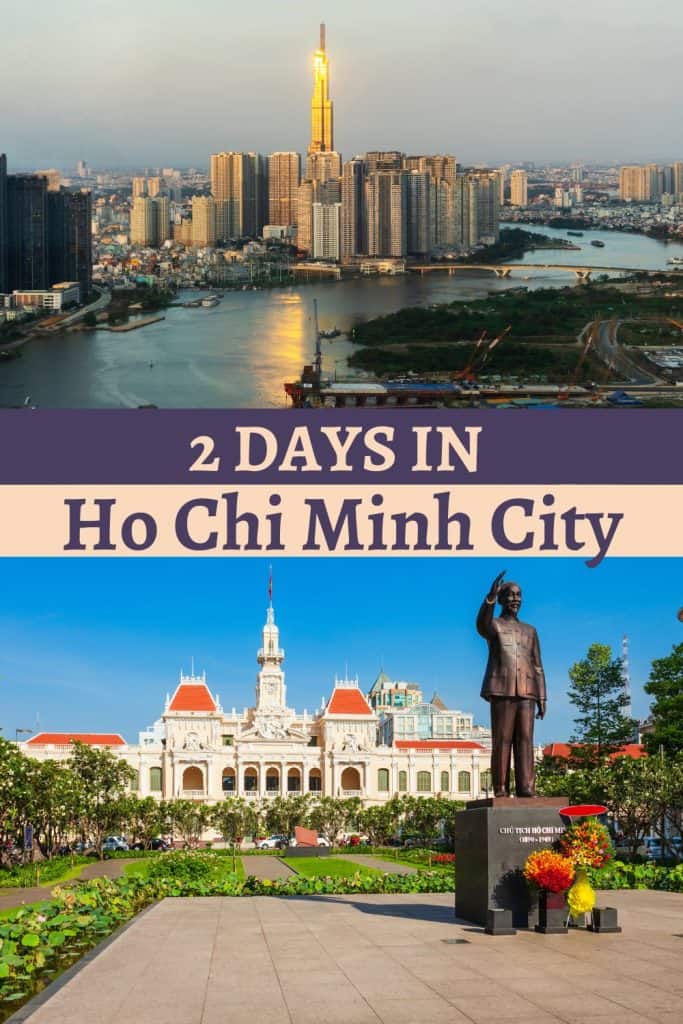
Following the Treaty of Saigon in 1862, the city saw an influx of French settlers and thus Western French architecture, which remains today. In the 1950s, as the North Vietnamese, also called the Viet Minh, gained independence and control of the northern half of the country, South Vietnam was a capitalist and anti-communist state.
The US sided with the South Vietnamese in the Vietnam War, while the North was aided by the Soviet Union and China. In 1975, the event is commonly known in the western world as the Fall of Saigon occurred, and the war was over. Seven thousand Americans and South Vietnamese were evacuated by helicopter in the final evacuation, known as Operation Frequent Wind, the single largest helicopter evacuation in human history.
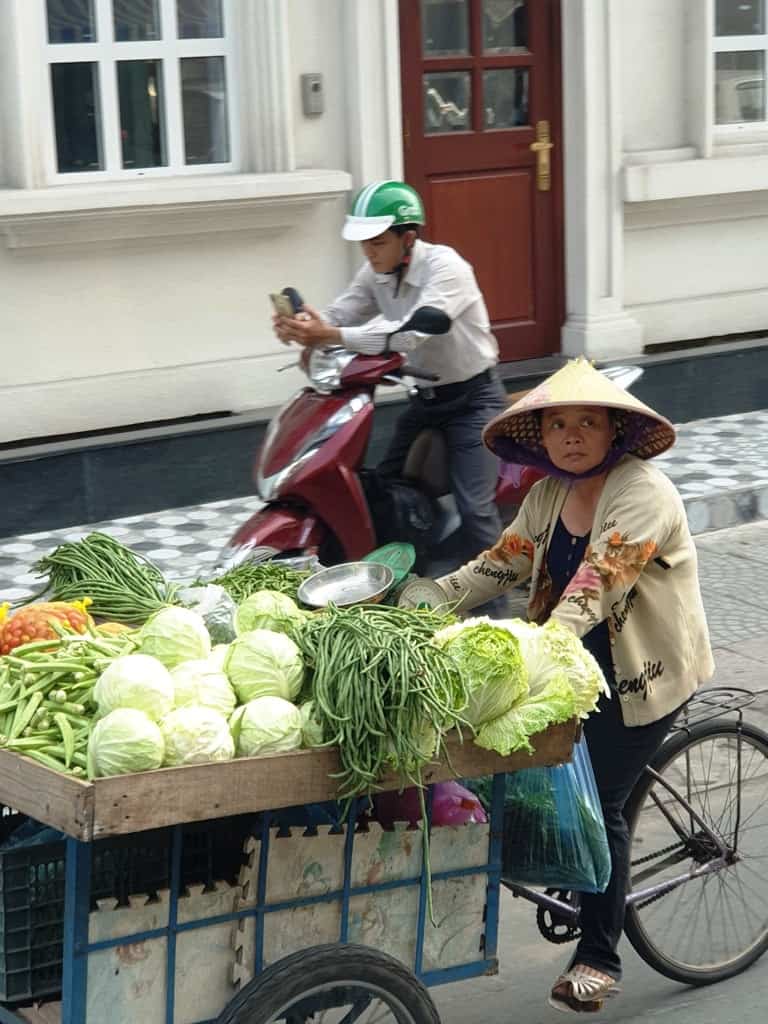
In 2004, United Airlines flew the first return flight to Vietnam since 1975. Today, Ho Chi Minh City is a bustling, vibrant city with a history of both ancient and modern. When we think of Vietnam, of Saigon, we think of the Vietnam War.
Disclaimer: This post contains affiliate links. This means that should you click on certain links, and then subsequently purchase a product, I will receive a small commission.
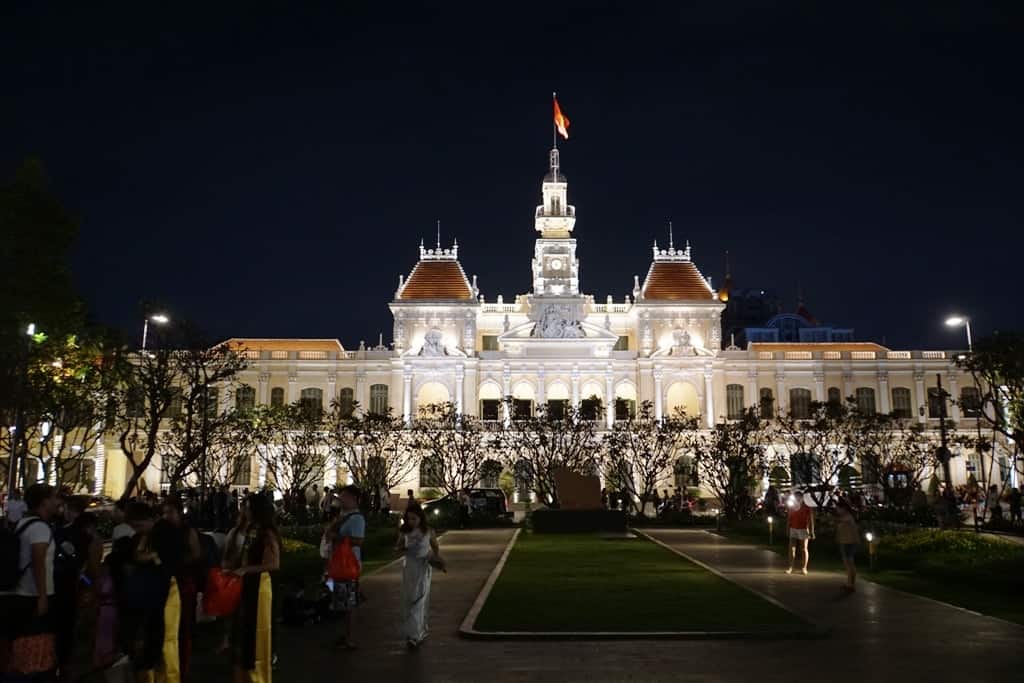
Table of Contents
2 Days in Ho Chi Minh Quick Guide
Planning a trip to Ho Chi Minh? Find here everything you need:
Looking for transportation from/to the airport? Click here for more information and to book your private transfer.
Top-Rated Tours and Day Trips to Do in Ho Chi Minh:
– From Ho Chi Minh City: Mekong Delta & Vinh Trang Pagoda Tour
– Cu Chi Tunnels: Morning or Afternoon Guided Tour
– Cu Chi Tunnels and Mekong Delta: Day Tour from Ho Chi Minh
– Private Street Food Motorbike Tour
– Bitexco Financial Tower: Saigon Sky Deck – Fast Track Ticket
Where to stay in Ho Chi Minh: New World Saigon Hotel (five-star hotel), Calista Sai Gon Hotel (excellent location)
Best Time to Visit Ho Chi Minh City
Vietnam is a South Asian country with a tropical climate. Ho Chi Minh’s average yearly temperature is 27 degrees Celsius (81 degrees Fahrenheit) and it has an average rainfall of 76 inches. The rainiest months are May to October, making December to April the dry season and the best time to visit Ho Chi Minh City. February and March have the least amount of rainfall, with less than half an inch each month.
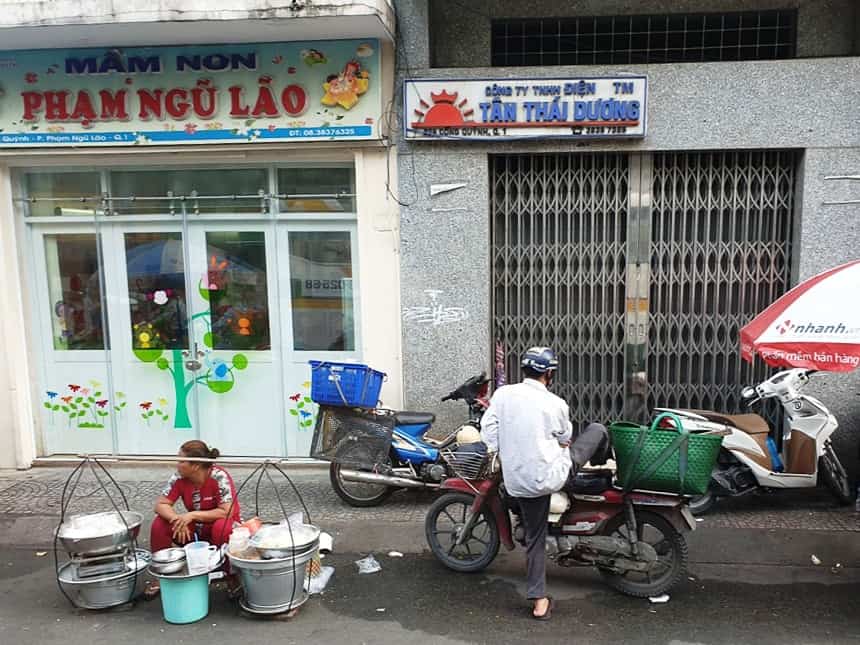
How to Get To and From the Airport
Tan Son Nhat International Airport, the busiest airport in Vietnam with over 38 million passengers in 2018, lies in the center of the city. Currently, the only public transportation option to and from the airport are public buses. These depart from a stand outside of the international terminal. The new Ho Chi Minh City Metro line is expected to include a metro line to the airport but as the subway system has not yet been completed there is no word yet on the expected completion of an airport metro route.
A private car and driver is one of the most convenient ways to get into the city, although the airport is also served by the city’s taxi drivers.
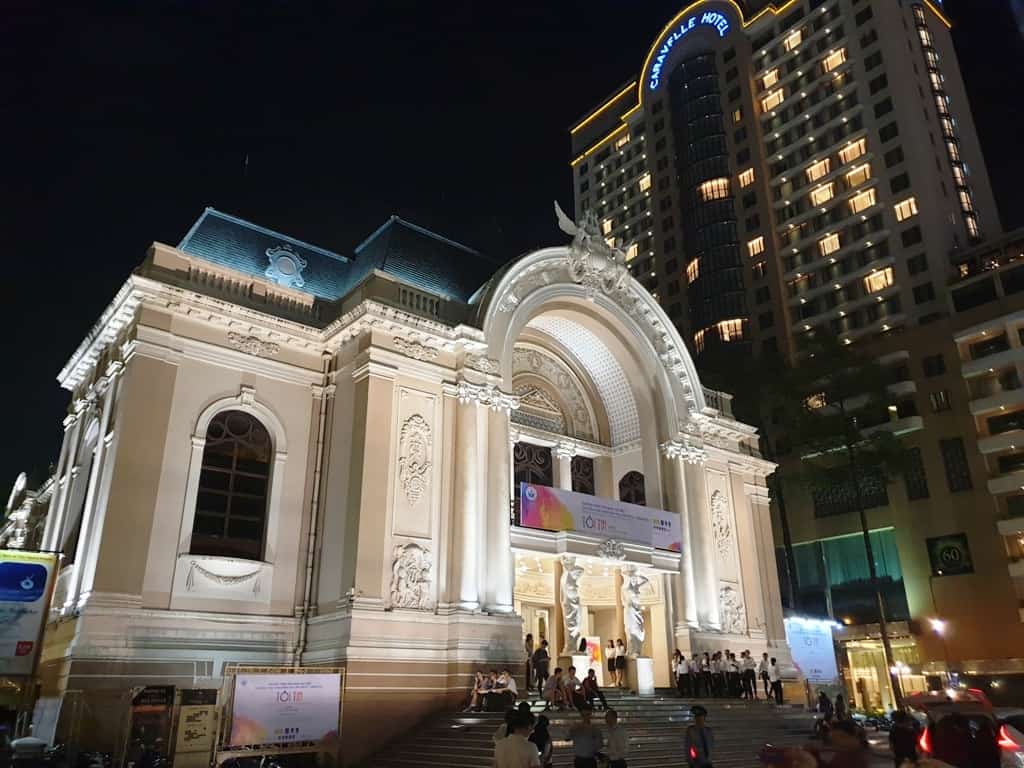
2 Days in Ho Chi Minh City, Vietnam – a Comprehensive Itinerary
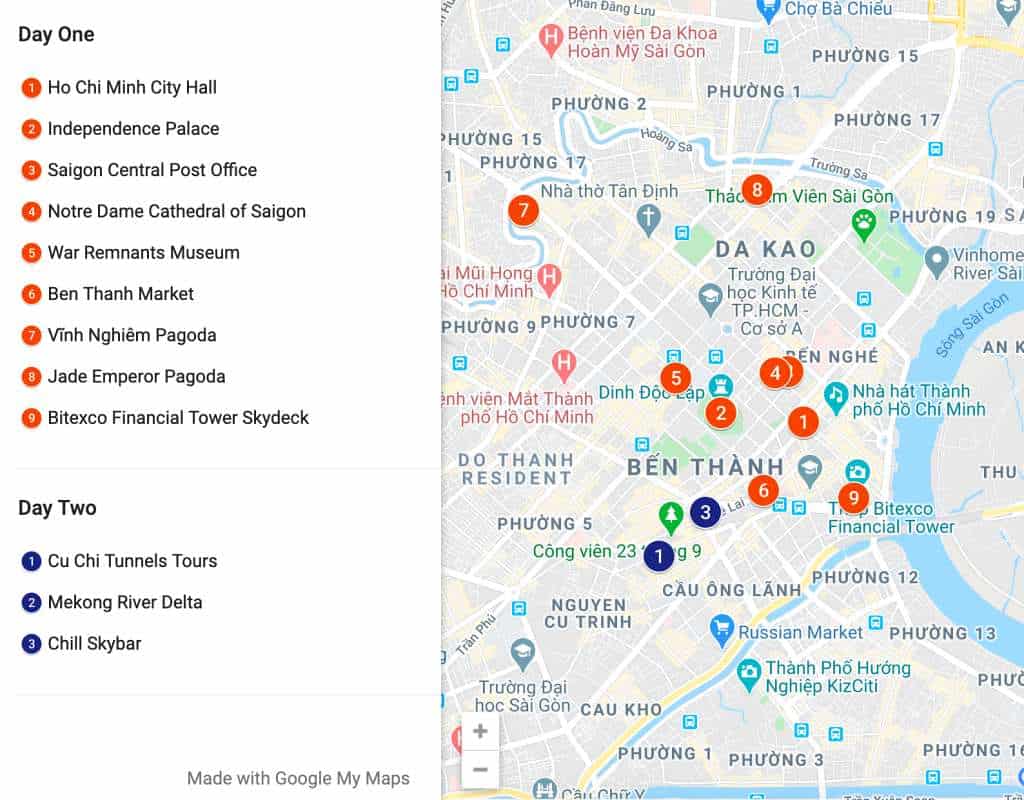
2 Days in Ho Chi Minh City: Day One
Ho Chi Minh City Hall
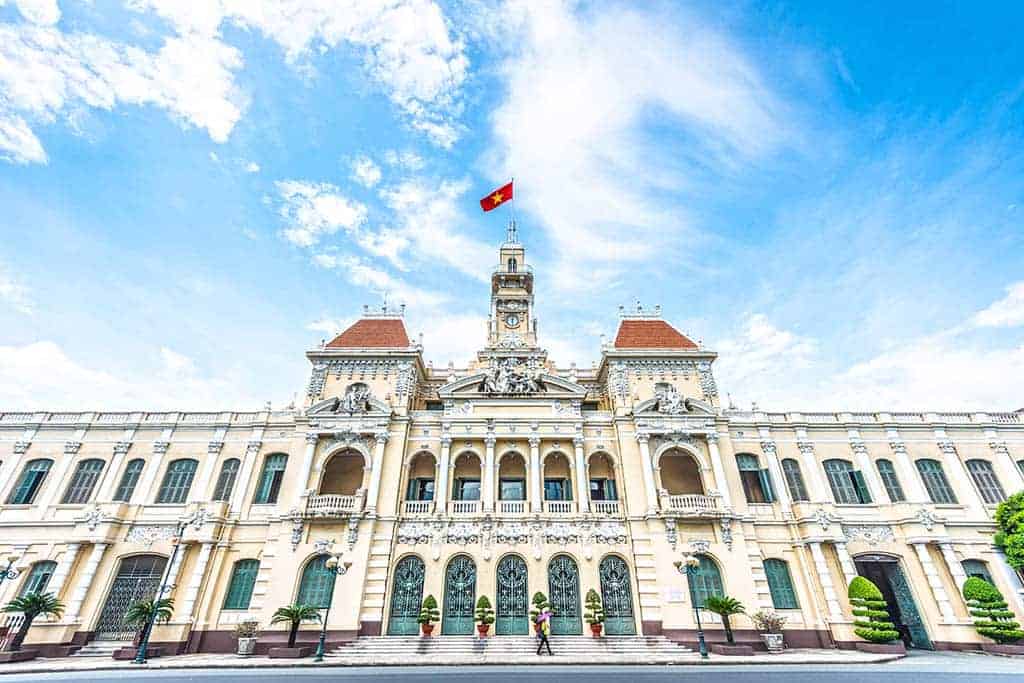
Ho Chi Minh City Hall was built in the early 1900s, during the French colonization of Vietnam, and is modeled after the Hotel de Ville in Paris. In 1975, it was renamed the People’s Committee Building Saigon and is located on one end of the Nguyen Hue promenade. A large statue of Ho Chi Minh stands out front in the gardens. In the evening, the building is lit with LED lights, making it one of the most beautiful pieces of architecture in the city.
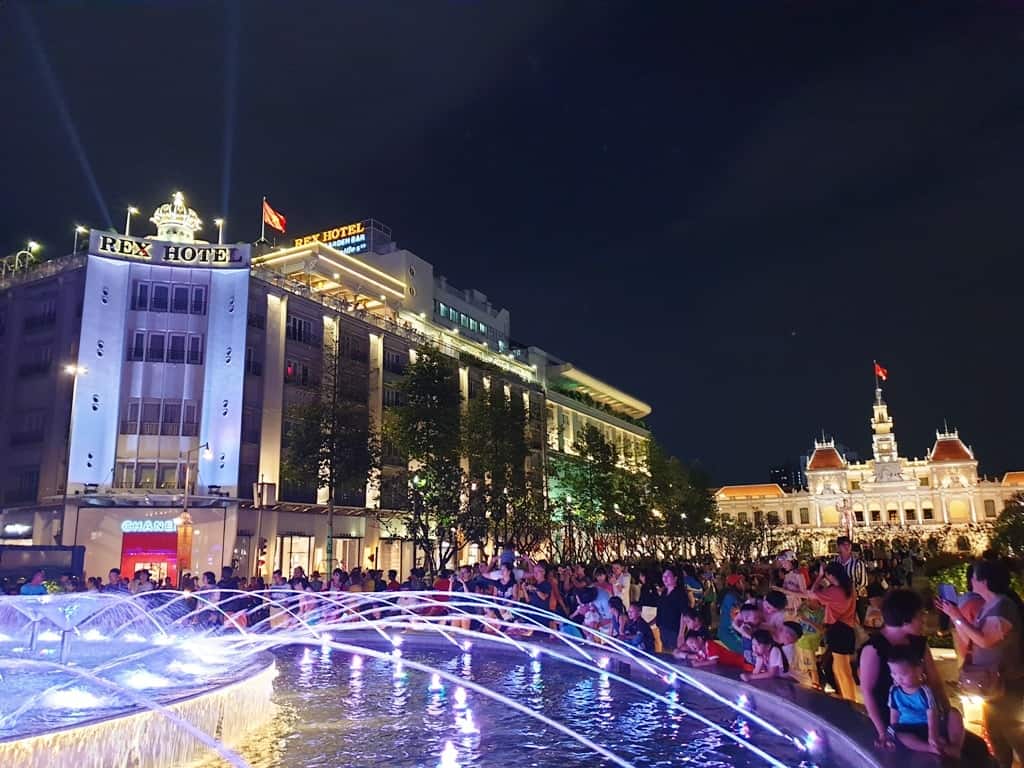
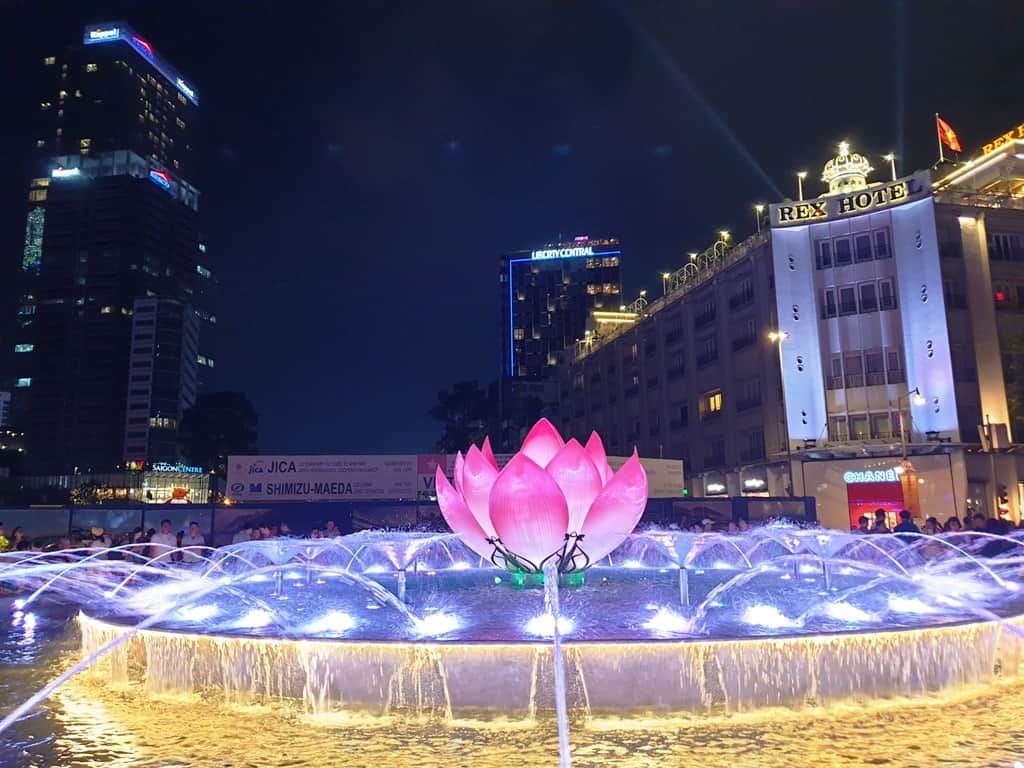
Reunification Palace
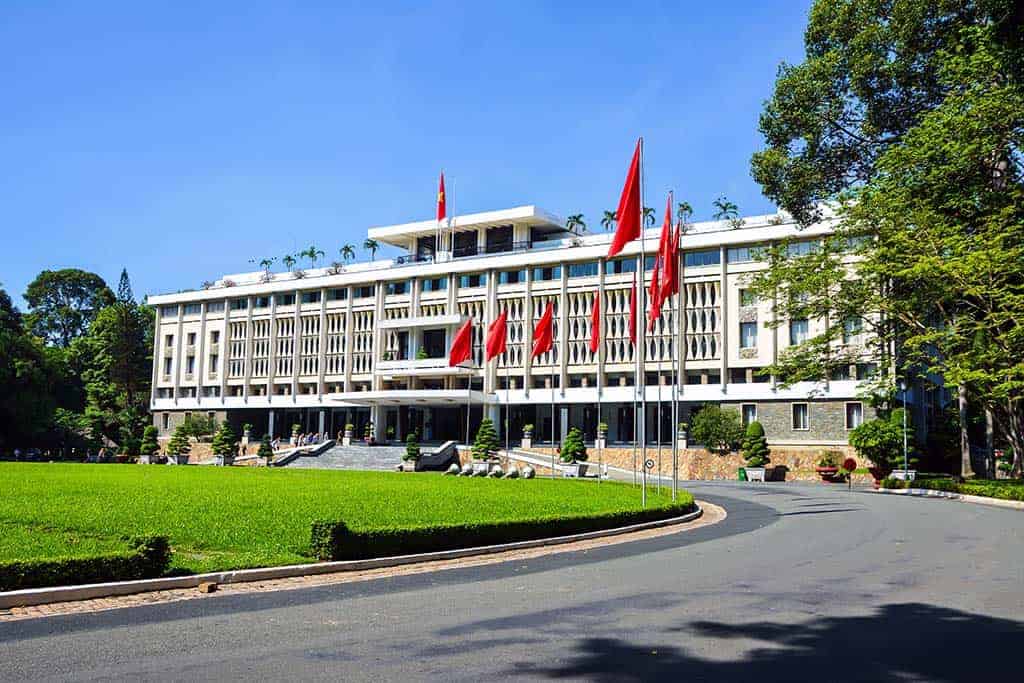
The city’s Reunification Palace, once the home and workplace for General Ngo Dinh Diem, is one of the city’s top must-see sights. It has lush gardens, secret rooms, antique furniture, and a command bunker. In 1975, it made history as it was the site of the end of the Vietnam War, and today is frozen in time with the tanks and many of the building’s original furnishings and decor still in place.
Saigon Central Post Office
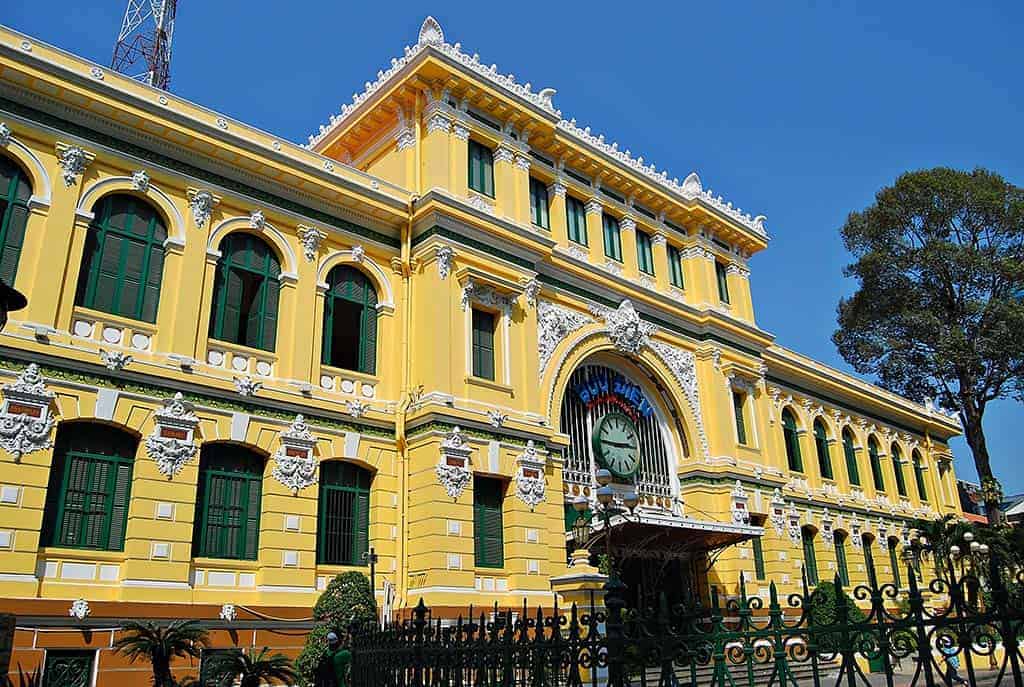
The Saigon Central Post Office is one of the city’s most beautiful buildings. Built in the late 1880s, the post office is a step back in time to the French Colonial Era and people who step inside might feel as though they’ve been transported to a 20th-century European train station.
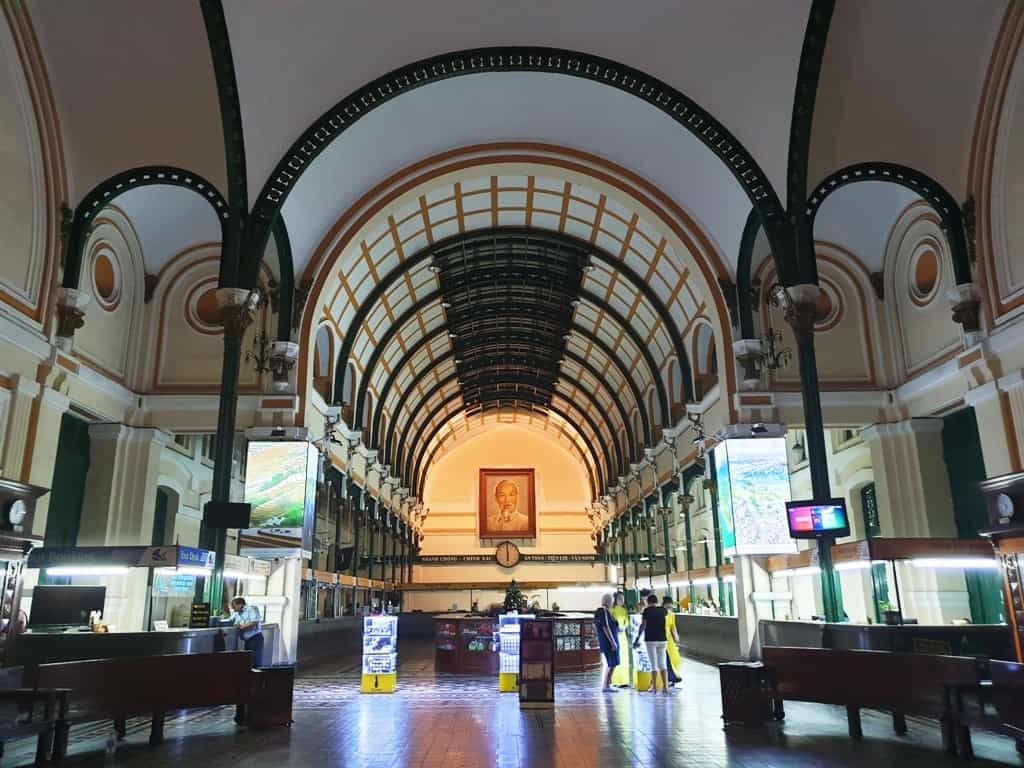
The exterior’s colonial facade is ornate, with curved windows framed with shutters. But it is the interior that wows – it has a high arched ceiling with smaller domes and elegant metal bones framing the entire ceiling. The post office offers all postal services, but the most famous feature is the 89-year old man who writes letters for those who cannot write for themselves, or (more commonly today) translates letters into French or English.
Notre Dame Cathedral of Saigon
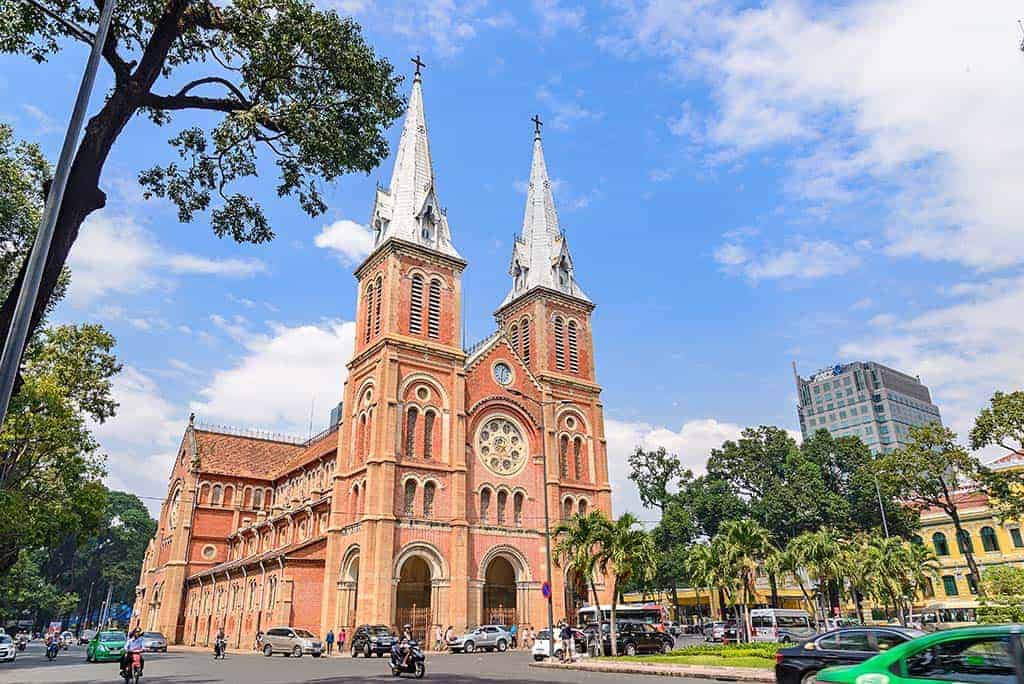
The Notre Dame Basilica Cathedral of Saigon is the center of the faith for Vietnam’s 6.2 million Catholics. It was built in the 1860s by French colonists and rebuilt in 1877-1880 as a replica of Notre Dame de Paris. Materials were shipped from France. In 2005, the statue of the Virgin Mary that stands outside the cathedral reportedly shed a tear, although the church could not officially confirm it.
War Remnants Museum

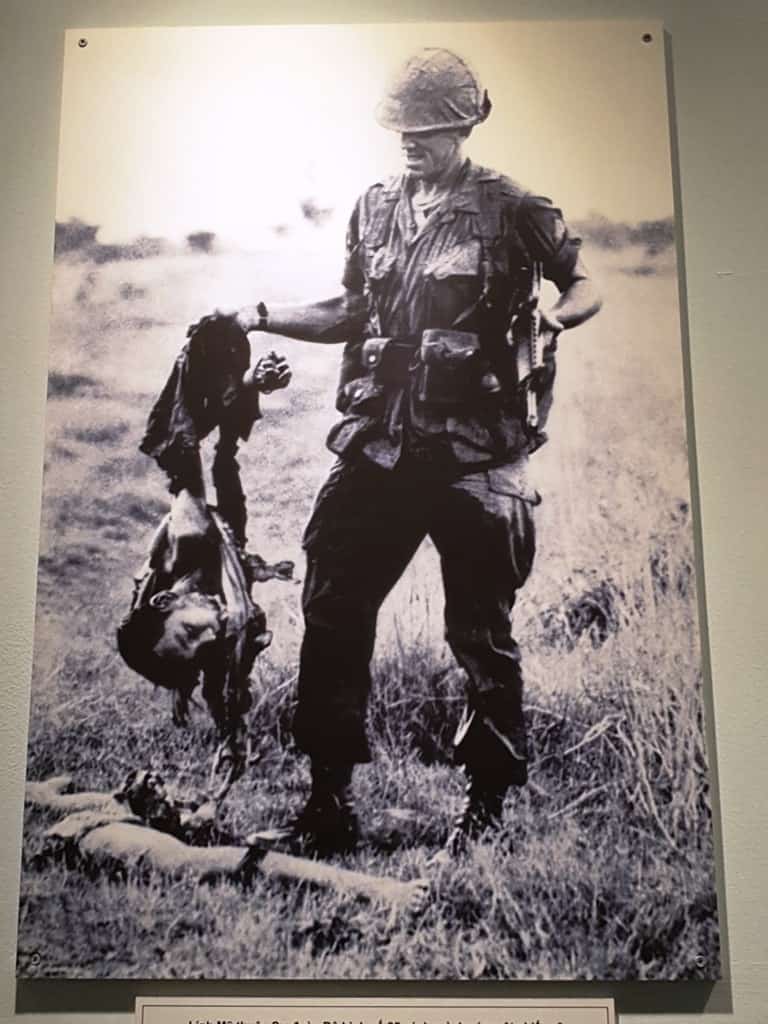
Formerly the Museum of Chinese and American War Crimes, the War Remnants Museum is one of the most popular museums in the city, mostly with Western tourists. The museum opened just after the war, with a strong anti-American bent – it was called the Exhibition House for the US and Puppet Crimes.
It received its modern name in the 1990s when the US and Vietnam normalized relations and sanctions were lifted. Among the most impressive exhibits are the American Huey helicopter, M48 Patton tank, and the F-5A fighter jet.
Americans will recognize the Huey from footage of the war – it is the helicopter that ferried soldiers into combat zones. The exhibits inside include photography depicting bodies and grieving families, stories of the global protests, torture chambers, and more.
Ben Thanh Market
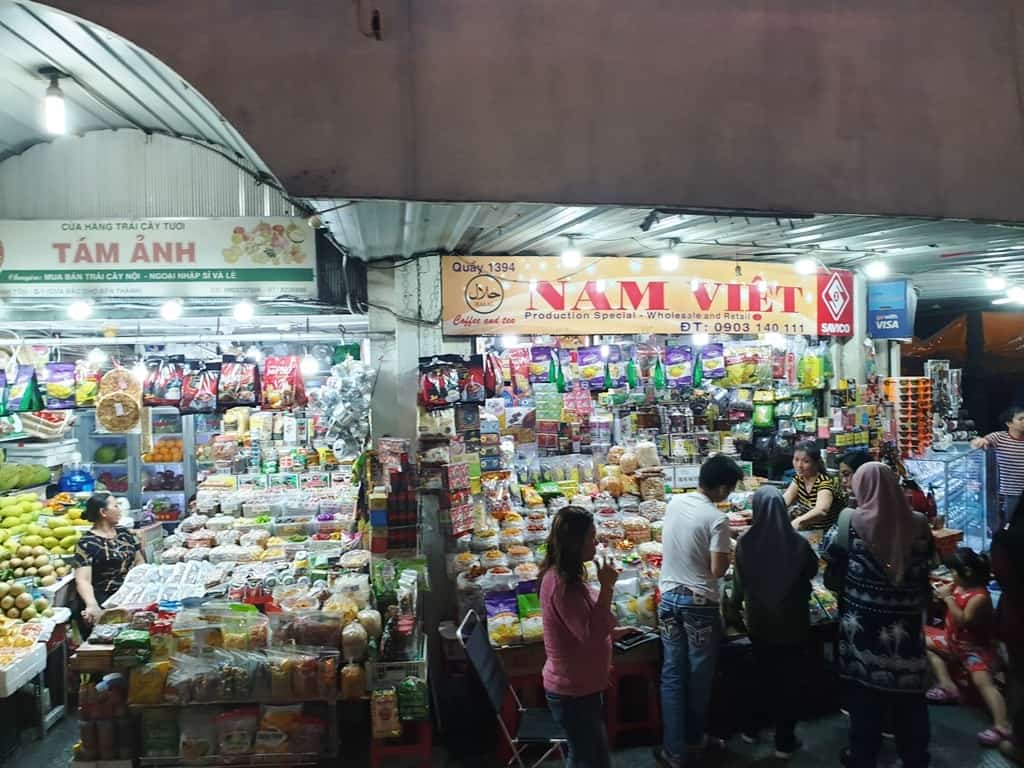
Ben Thanh Market is a large market in the center of District 1, in the heart of Saigon. It is a great place to buy local handicrafts and other souvenirs, including Vietnamese art. There are also tons of hawker stalls selling inexpensive meals. At night, the restaurants around the market open their doors and the area becomes a vibrant night market full of great food and tempting aromas.
Vĩnh Nghiêm Pagoda
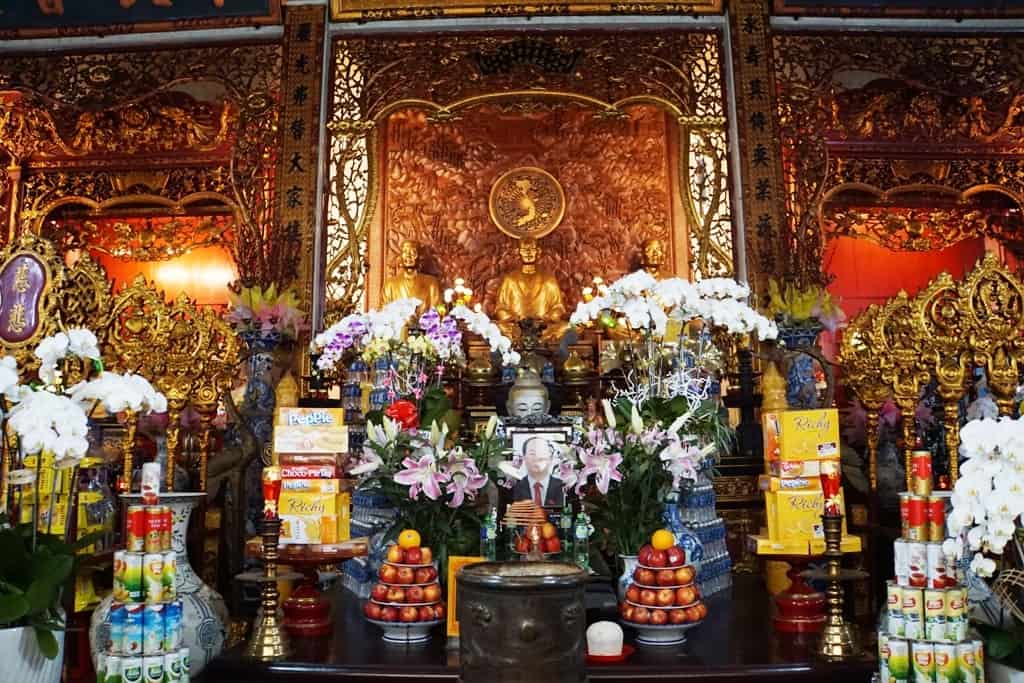
Vĩnh Nghiêm Pagoda, center for Buddhist beliefs, fuses Japanese culture with traditional Vietnamese architecture. Built in the 1960-70s, the complex has not only the pagoda but also a tower that houses classrooms and dormitories for monks and nuns. There are large sculptures of Buddha along with carvings of the sacred animals.
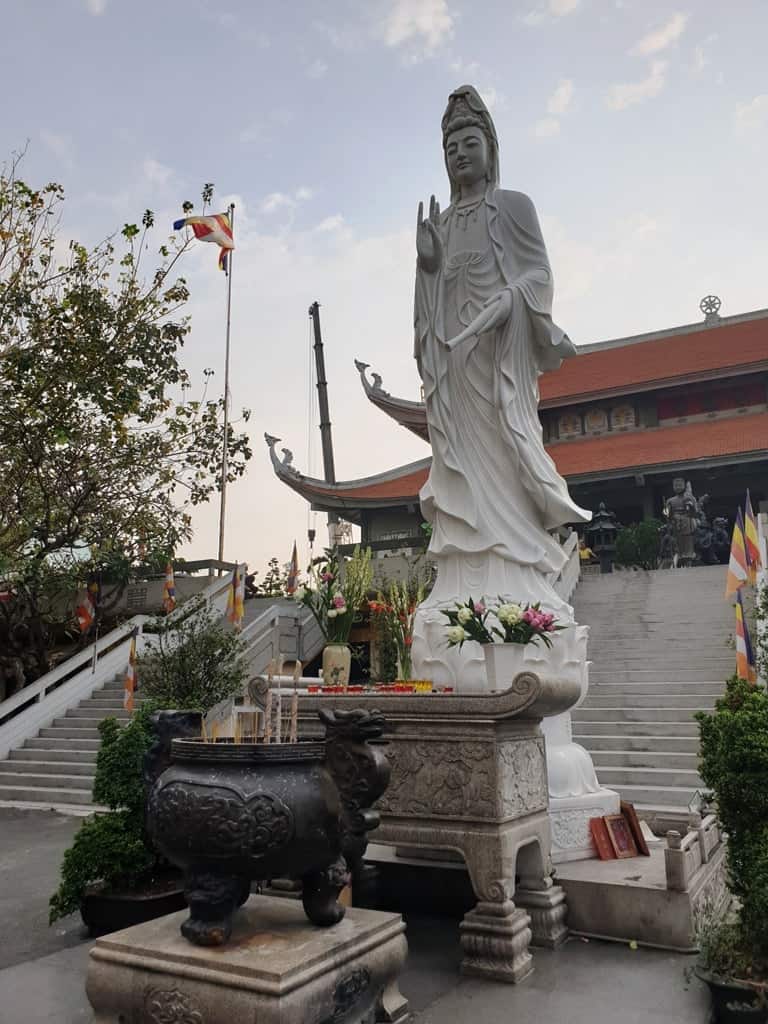
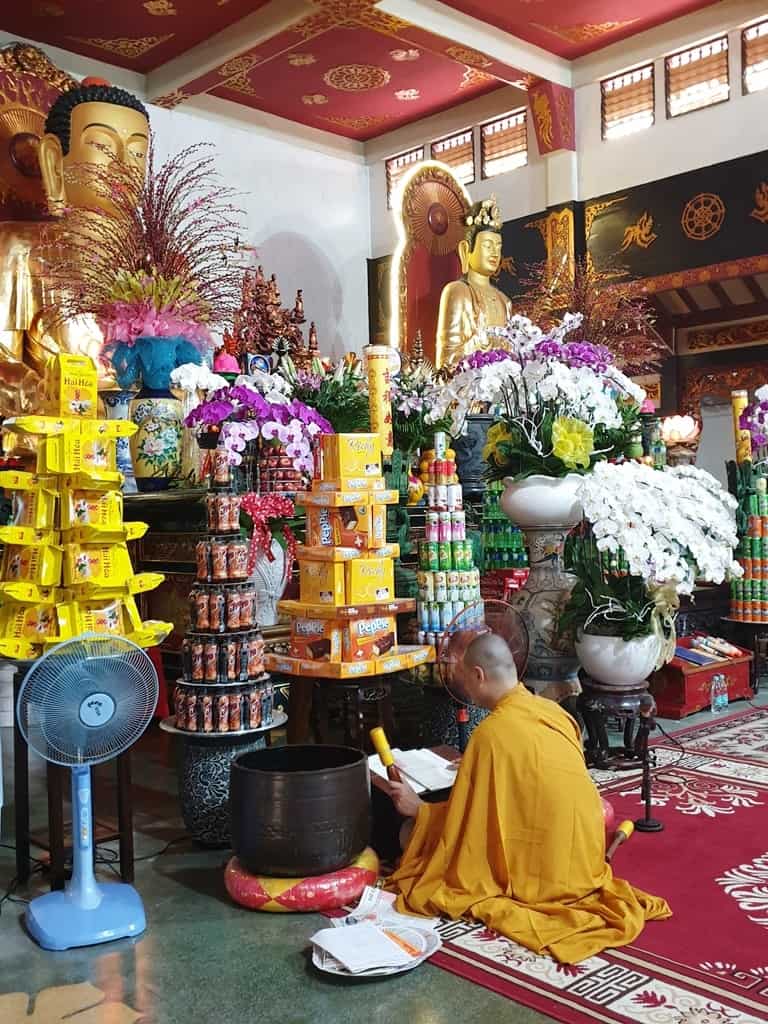
Jade Emperor Pagoda
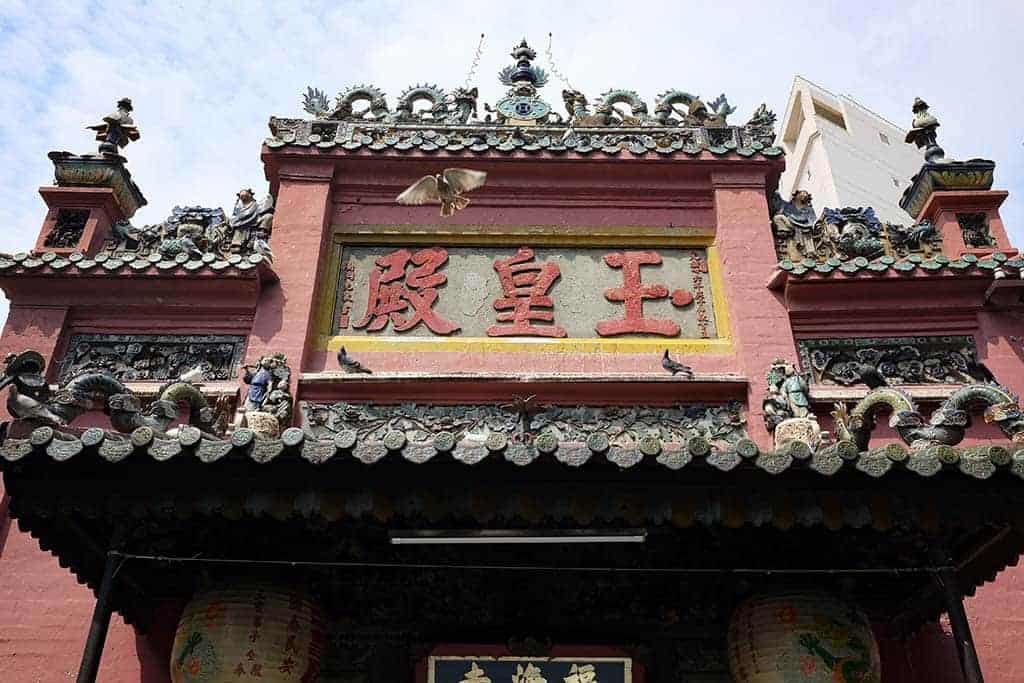
The Jade Emperor Pagoda was built in 1909 to honor the Tao god Ngoc Hoang and is one of the most atmospheric temples in the city. There are exquisite wood carvings, elaborate tile work, and statues depicting all sorts of phantasmal and grotesque characters.
Drink Vietnamese Coffee
While the French surely introduced coffee to the Vietnamese, it is the Vietnamese who perfected their unique style. Ca phe, as its known, is made by dripping hot water over coarsely ground beans. Many Vietnamese drink their ca phe with sweetened condensed milk, which began because the French couldn’t easily acquire fresh milk. Other varieties include coffee with yogurt, coffee with egg yolk and condensed milk, and coffee with fruit smoothies. Best done at a cafe that specializes in Vietnamese ca phe!
Bitexco Financial Tower Skydeck
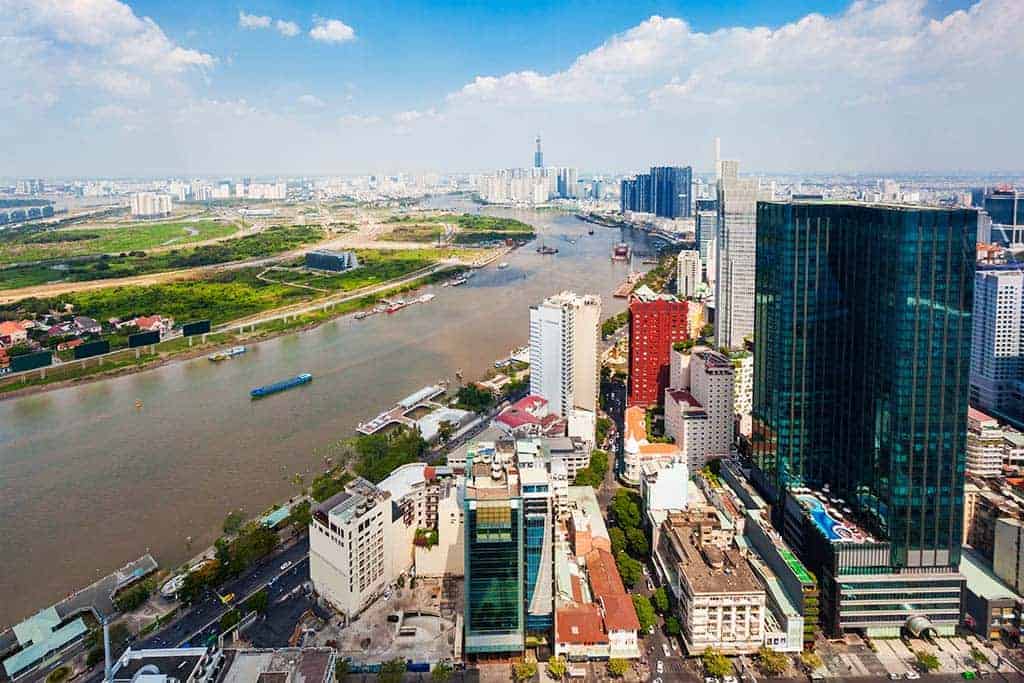
The Bitexco Financial Tower is the second tallest tower in the city at 262.5m – although at the time of construction it was the tallest in Vietnam. The Skydeck observation deck is open daily. It offers visitors 360-degree views of Ho Chi Minh City. You can go independently or as part of a tour.
2 Days in Ho Chi Minh City: Day Two
Cu Chi Tunnels
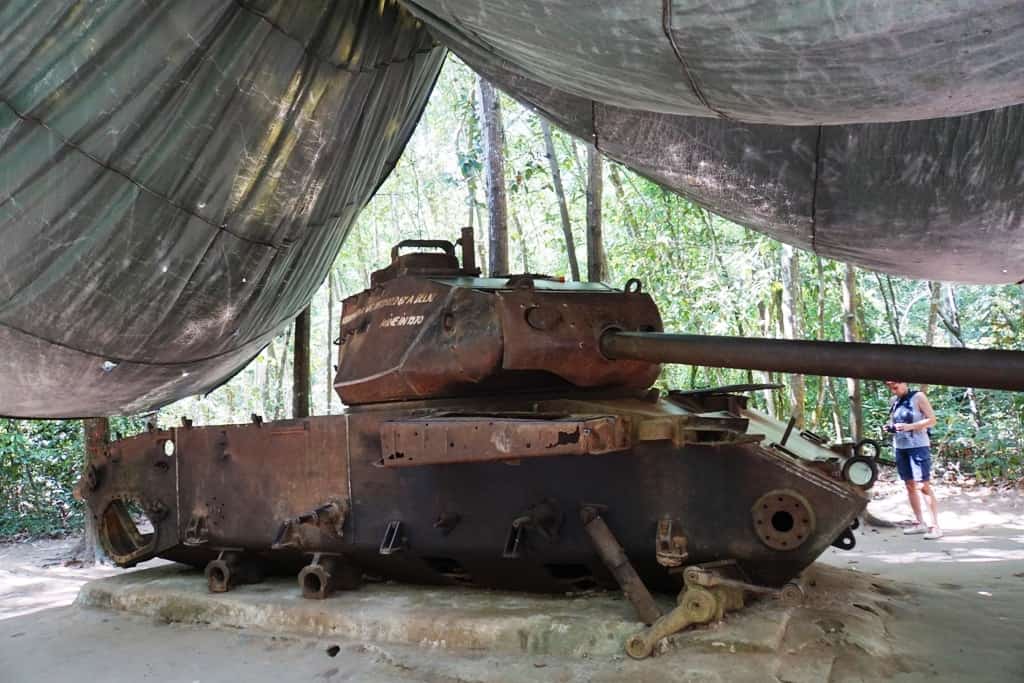
Before and during the Vietnam War, the Communist Viet Cong guerilla forces dug a network of tunnels across much of the country to help support and aid the North Vietnamese fighters. Construction really began in the 1940s when the Vietnamese were fighting the French, but were expanded greatly during the war.
The Cu Chi Tunnels are located in the Cu Chi District of Ho Chi Minh City and is one of the city’s top tourist attractions. Soldiers used the Cu Chi Tunnels to house troops, transport communications and supplies, coordinate surprise attacks, lay booby traps, and more.
These tunnels grew over time to include living quarters, kitchens, ordnance factories, bomb shelters, and hospitals, as well as theatres and music halls for the entertainment of the peasant troops and their families. At the height of the war, the tunnels were literally where most Viet Cong lived.
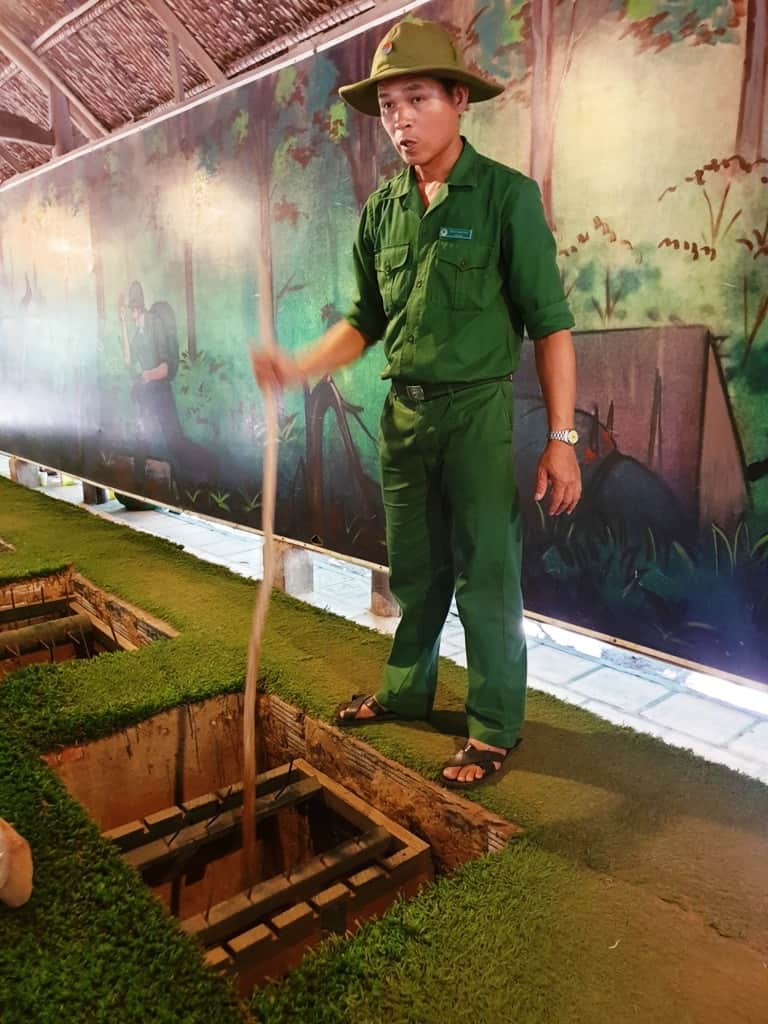
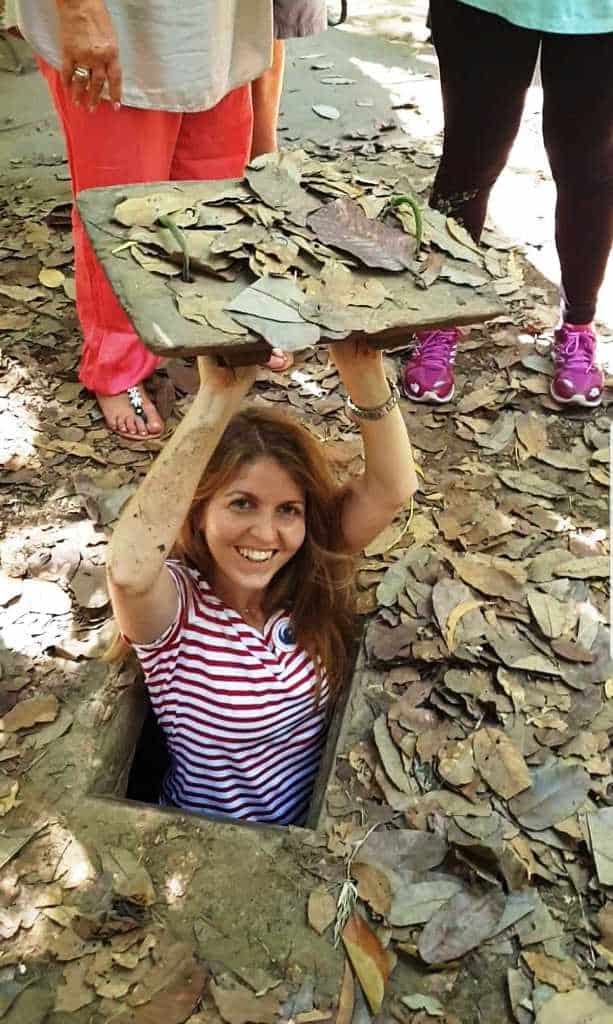
The US and Australian forces attempted to clear the tunnels by training small soldiers, known as tunnel rats, to navigate through the cramped tunnels looking for booby traps or enemy soldiers. There were two operations mounted by US forces to destroy the tunnels.
While these attacks succeeded in driving out thousands of residents in the areas they bombed, the North Vietnamese and VC troops returned. In 1968, the tunnels were used as a stronghold in the Tet Offensive.
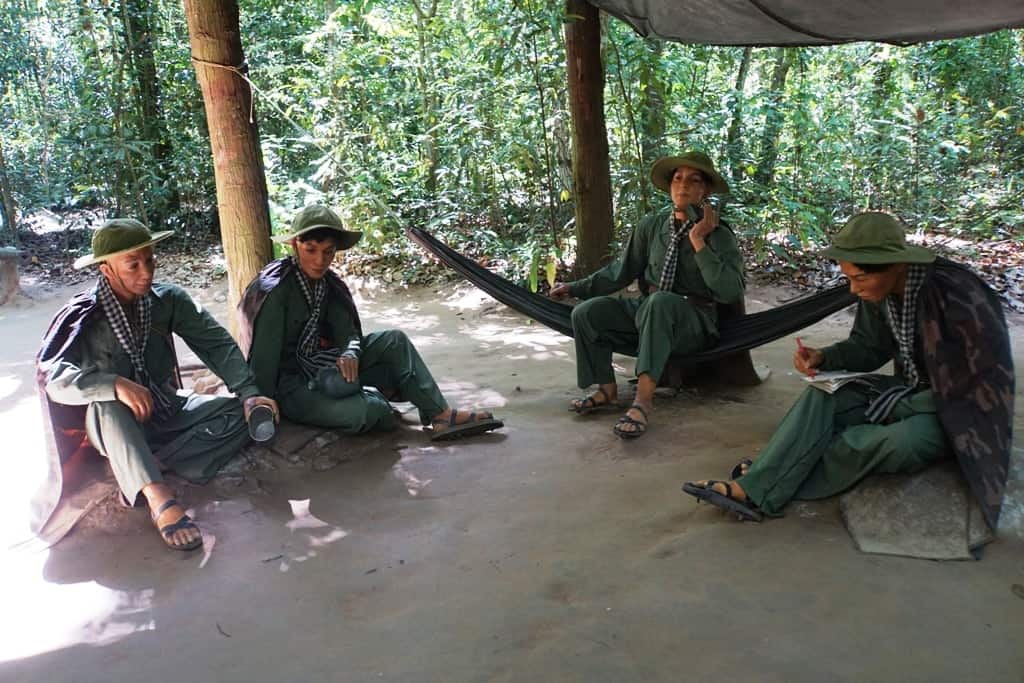
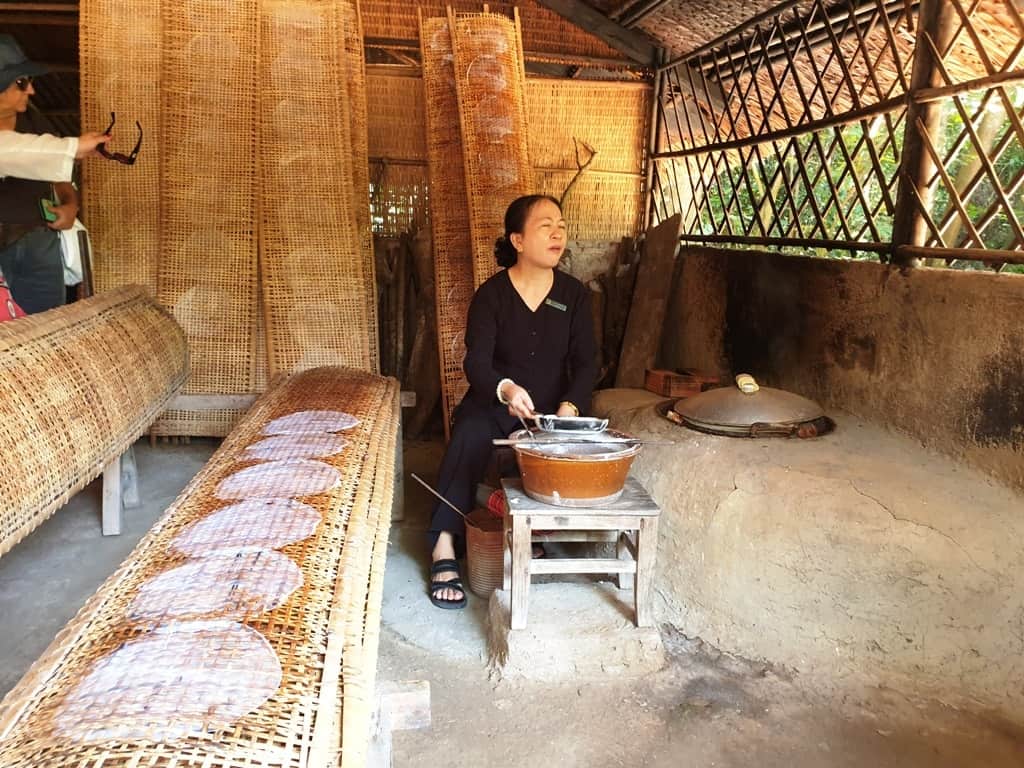
Today, you can visit the complex of tunnels at Cu Chi, located within the war memorial park. Visitors can crawl through the tunnels, though in places they have been enlarged, see the underground conference rooms where troops planned their booby traps and strategic campaigns, and even eat a meal similar to ones the VC would have eaten.
Click here for more information and to book a guided tour to the Cu Chi tunnels.
Mekong Delta
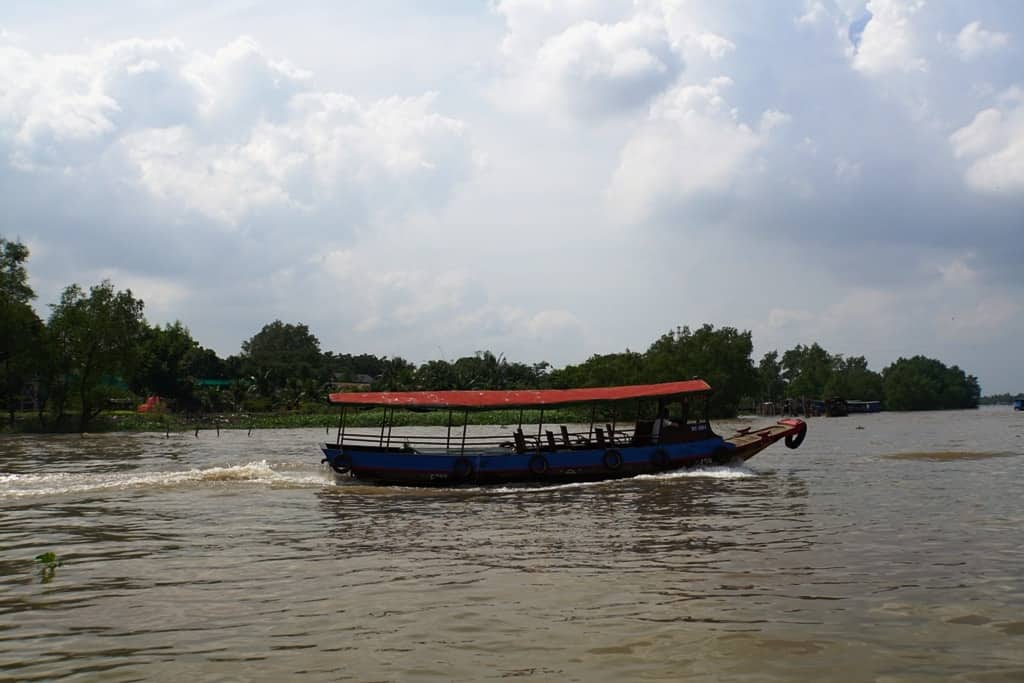
The Mekong River, one of the longest rivers in Southeast Asia, meets the ocean at the vast Mekong Delta, a water world of rivers, swamps, islands, floating markets, villages, rice paddies, and pagodas that covers more than 15,000 square miles. The biologically diverse delta is vital to the Vietnamese economy, because more than half of the nation’s rice and fish comes from the delta region, and is truly the agricultural heart of Vietnam.
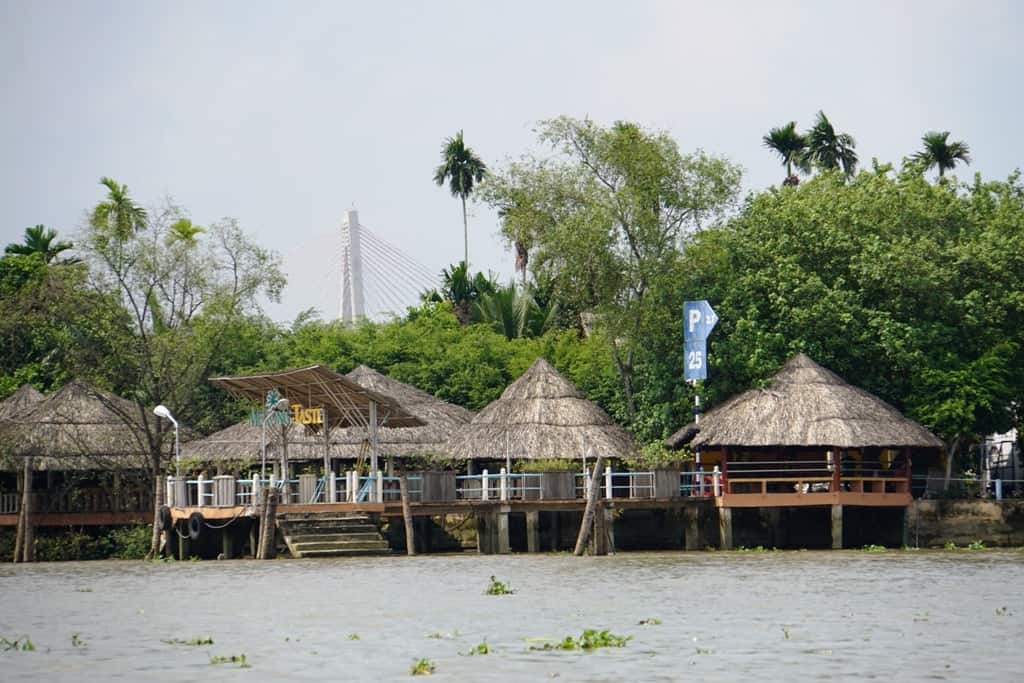
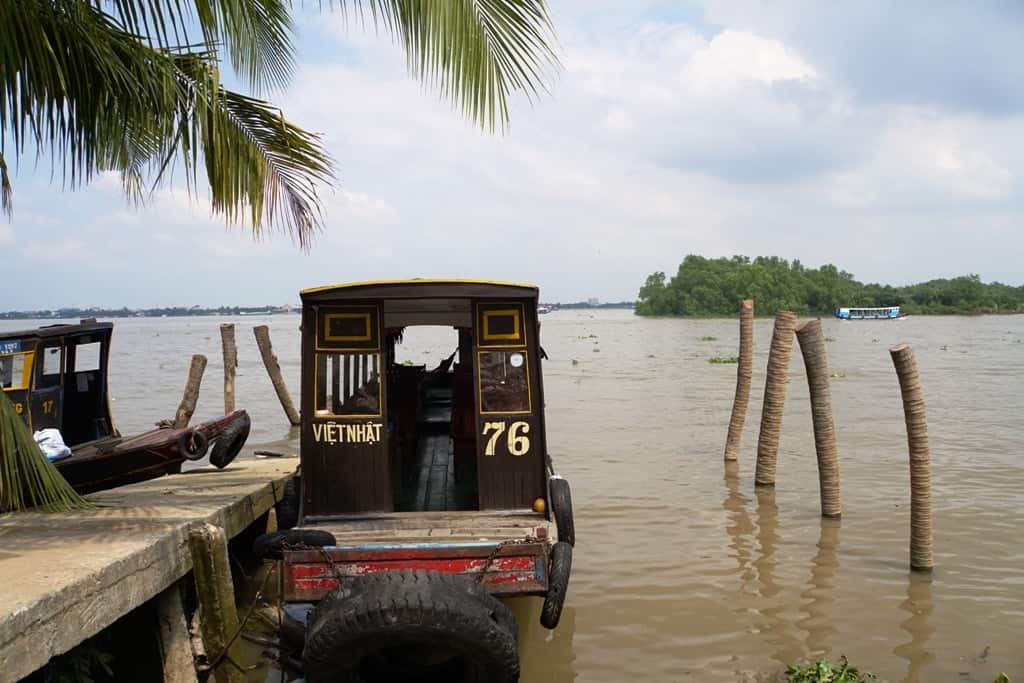

The Mekong Delta is a day trip from the city, though if you have more time I recommend spending more than a day here. It’s a great stopping point for travelers going between Vietnam and Cambodia. Some of the most popular towns to visit are My Tho, Can Tho, and Soc Trang. Visitors come for the impressive floating markets and pagodas, the local orchards, and flower markets.
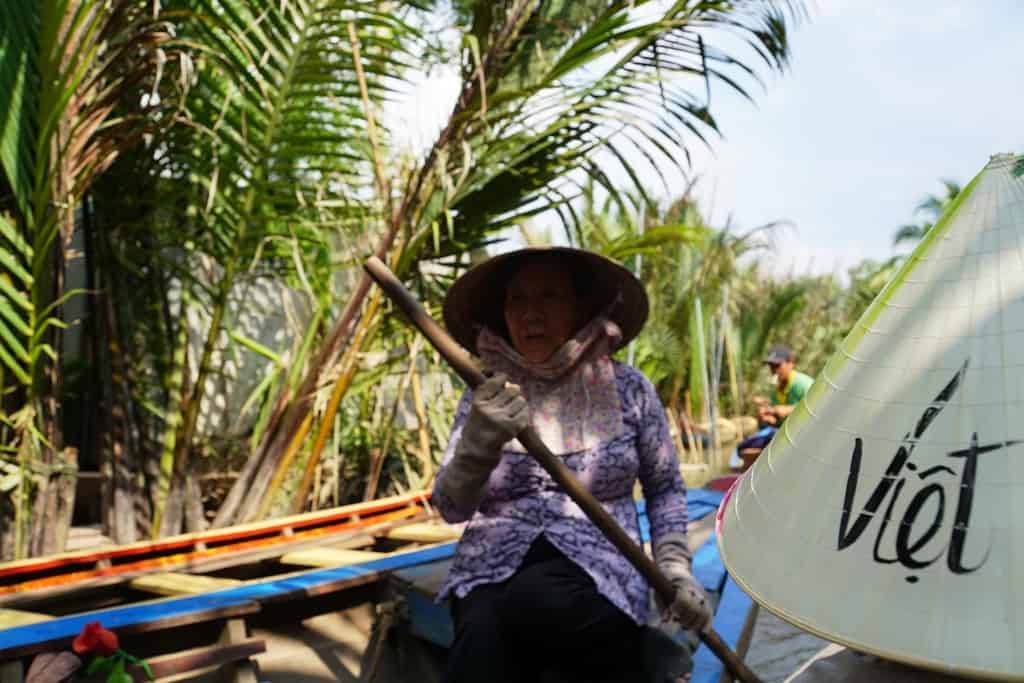
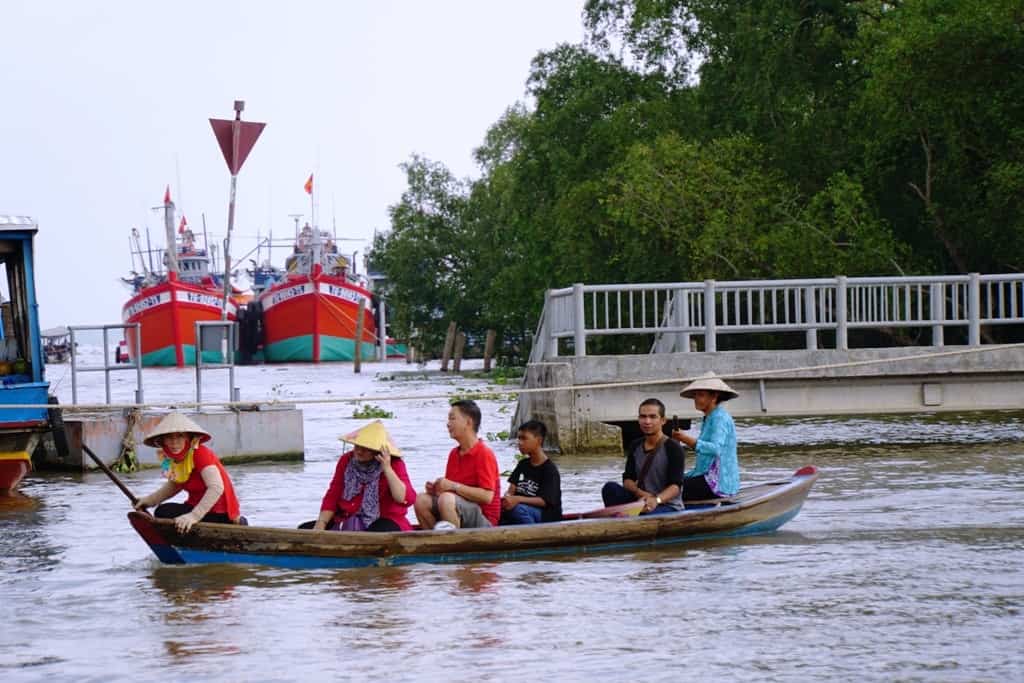
Travelers interested in more natural elements might be interested in the Can Gio Biosphere Reserve, a wetland ecosystem and UNESCO heritage site, valuable for its rich mangrove forests.
Check here for more information and to book a small group guided tour to the Mekong Delta.
Alternatively, you can combine a visit to the Cu Chi tunnels with the Mekong River on a day trip from Ho Chi Minh with this tour.
Enjoy a Drink at the Chill Skybar
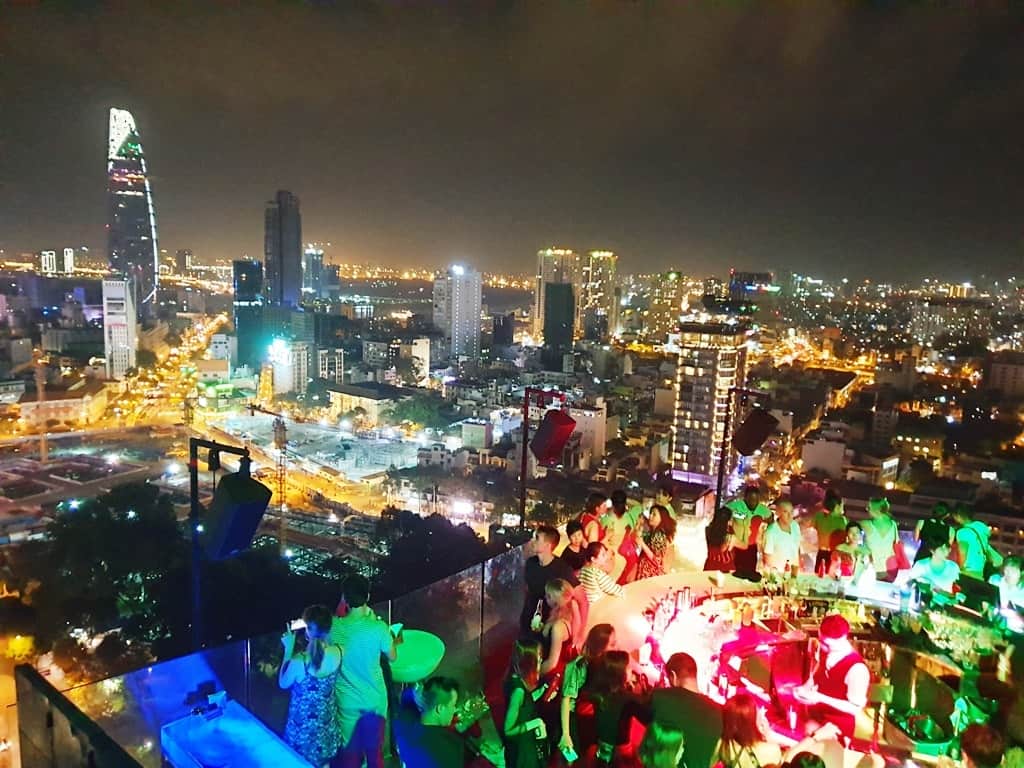
Chill Skybar is one of the most popular nightclubs in the city. It’s a fashionable and lively bar, which attracts a crowd of people keen to see and be seen. Located on the 25th floor of AB Tower, the bar also offers excellent views of the city.
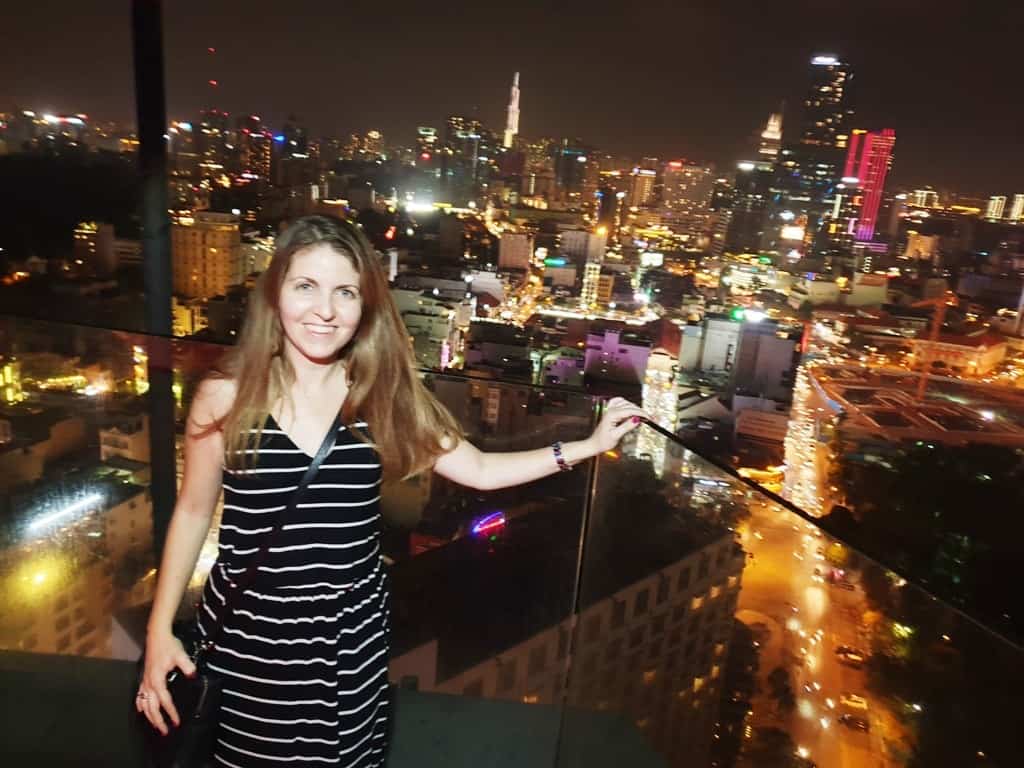
Drinks can be expensive, but Chill Skybar has a happy hour from 17:30-20:00 with many drinks half price. If you’d like to have a table you need to call ahead for a reservation as the bar gets very busy, very quickly.
Where to Stay in Ho Chi Minh City
New World Saigon Hotel
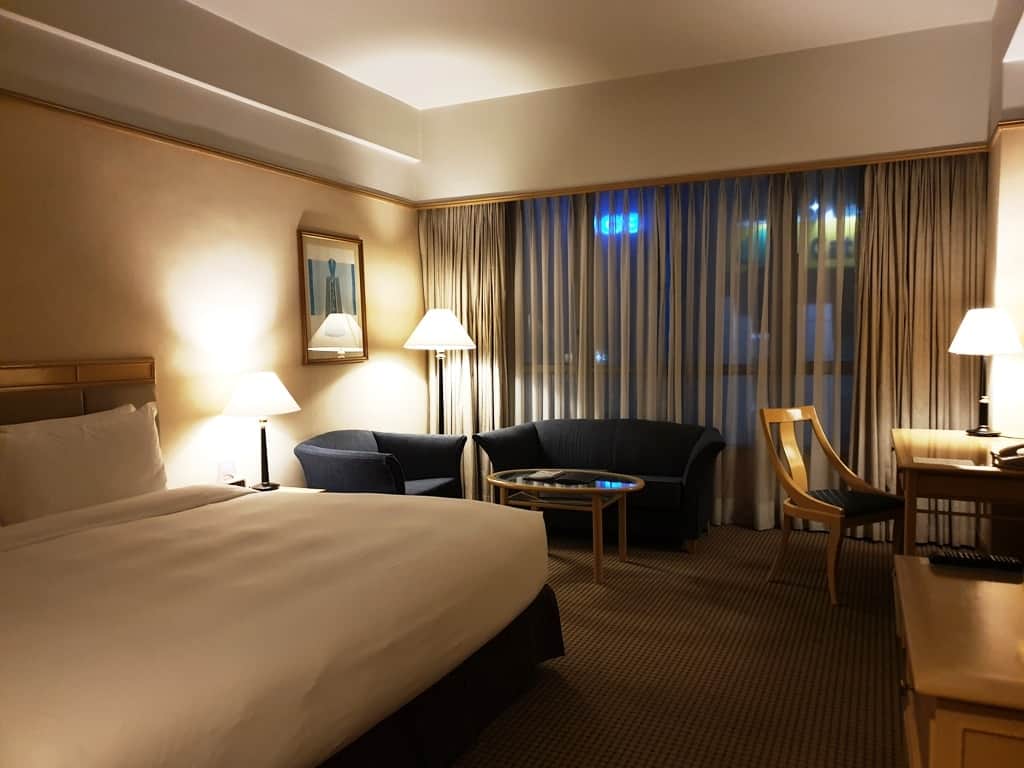
I stayed at the New World Saigon Hotel, which is located across from 23 September Park and near many of the city’s top attractions. This contemporary five-star hotel was the perfect place to stay while in Ho Chi Minh City. Rooms are spacious and chic, with modern furnishings and bathrooms.
Click here for more information and to check the latest prices.
Far from being a sleepy Southeast Asian town, Ho Chi Minh City is instead a vibrant and fun city with plenty of incredible history. From the Khmer Empire to the French colonization, to the ravages of the Vietnam War to modern-day, the city spans the test of time.
Ho Chi Minh City has something for everyone – the classical colonial architecture and charming residences, the glittering social scene of the city’s many cocktail bars, and the history of the city through the mid-20th century. Ho Chi Minh City and its surrounding natural expanses should be on everyone’s list.
Check more guides to Vietnam:
10 days in Vietnam – a detailed itinerary
2 days in Hoi An
One day in Hue
4 days in Hanoi
PIN IT!

